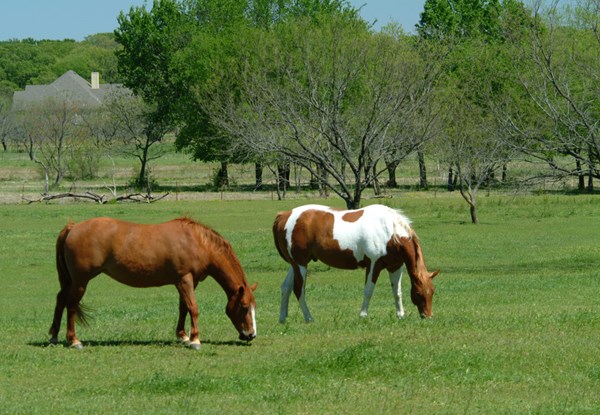 Credit: Thinkstock
Credit: ThinkstockWhen asked by Michigan State University Extension educators about the most important forage issues on his farm, an eastern Upper Peninsula farmer responded, “Improving our forage on a shoestring budget.” Simple. Clear. Direct.
As a result, MSU’s forage Extension specialist Kim Cassida was asked to come to Escanaba, Michigan for the MSU Extension Agriculture for Tomorrow Conference on March 10, 2015, and address the topic. She graciously agreed to do so. Cassida’s slide presentation on improving forage productivity on a shoestring budget may be found on the MSU Forage Connection website, along with a wealth of other information. She is also enthusiastic about birdsfoot trefoil and gave a very interesting presentation on the subject at the same conference.
Cassida’s points on forage improvement on a shoestring budget fall into three main categories:
- Assessment and planning.
- Better management of what you already have.
- Diversification of your forage base.
This first of three articles addresses the first topic, assessment and planning.
For each field situation, a farmer should spend some time assessing the forage stand. It is very useful to know what plant species are already present. An idea about the percentage of desirable forage species in the stand can be obtained at the same time. A note – written is better than “mental” – about the percent of grasses, legumes, other desirable forbs (a forb is a plant other than grass) and weeds should be made. This knowledge is necessary to make informed decisions about how the stand can or should be improved. In many instances, it is more logical to re-vitalize existing stands of perennial forage than to start fresh with a new seeding. This is because new seedings are expensive, both in cost of land preparation and seed and in lost forage production potential when plant growth is slow during the seedling period.
Thespecific use intended for the forage is also important. Will it be used for dry, stored hay, haylage/baleage, grazing or a combination of uses? Forage species differ in their suitability for each of these uses and making the wrong selection will result in disappointing results. Some guidelines regarding appropriate forage species use can be found in the 2014 Michigan Forage Variety Test Report.
The type of animal to be fed, including species and production class, also influences forage species suitability, management and related costs. Stored forages for dry dairy cows or beef cows don’t require the high nutrient content and digestibility needed for lactating cows. Another example is customers purchasing hay for pleasure horses do not generally demand high legume content. However, inclusion of a level of legumes acceptable to customers can result in reduced nitrogen fertilizer cost to the grower.
Forage yield expectation is critically important when assessing the condition of a forage stand. A farmer with access to low-cost land may be willing to accept lower yielding forages harvested over more acres than a farmer who prefers to maximize yield from scarce land resources or doesn’t want to travel the countryside from field to field. The economics between these options should be carefully considered. The process of re-establishing a hay field also affects short-term yield because new seedlings produce half or less of the yields that can be expected in subsequent years. This can affect the ability to meet animal feed inventory needs or potential hay sales income. If depending on hay sales income to cover the cost of stand improvement, remember that markets and prices are fairly volatile and depend on weather and other factors from year to year. Like most things in life, it’s something of a gamble.
Assessment of soil type, land features and growing season limitations is straightforward. If you are unsure of the soil types on your fields or ones you hope to purchase or rent, contact your local MSU Extension office, MSU Extension educator or NRCS district conservationist for help. Make sure you select forage species that are well-adapted to your land, weather extremes and growing season.
What resources of labor, capital and equipment are available to you? If maintenance, renovation or re-establishment of forage fields can be accomplished within the limitations of your current resources, it will require the least capital outlay, but at the cost of your time which should be given its true value. If equipment or fieldwork must be hired, that will add significantly to costs. If possible, minimize the costs of lime, seed and fertilizer over the expected lifespan of the stand by comparing prices from different vendors, purchasing ahead and making judicious seed variety choices. Buying the cheapest seed is not usually a good deal in the long run because better varieties usually yield more over the entire life of the stand.
The time frame for improving forage productivity will also affect costs. If slow progress is acceptable, then techniques like frost seeding, rotational grazing, improved manure management and strategic management of winter feeding sites can make good improvements over several years. Quick fixes are generally more expensive.
The next article in this series will address better management of what you already have.
These suggestions, in total or any part of them, can result in improved forage production on your farm. Each farm operation will need to assess whether particular components are practical in their own forage system. More details can be found on Cassida’s slide presentation on improving forage productivity on a shoestring budget and the MSU Forage Connection website.
This article was written by Jim Isleib, Michigan State University, and Kim Cassida, MSU Extension, Department of Plant, Soil and Microbial Sciences, and was published by Michigan State University Extension.


